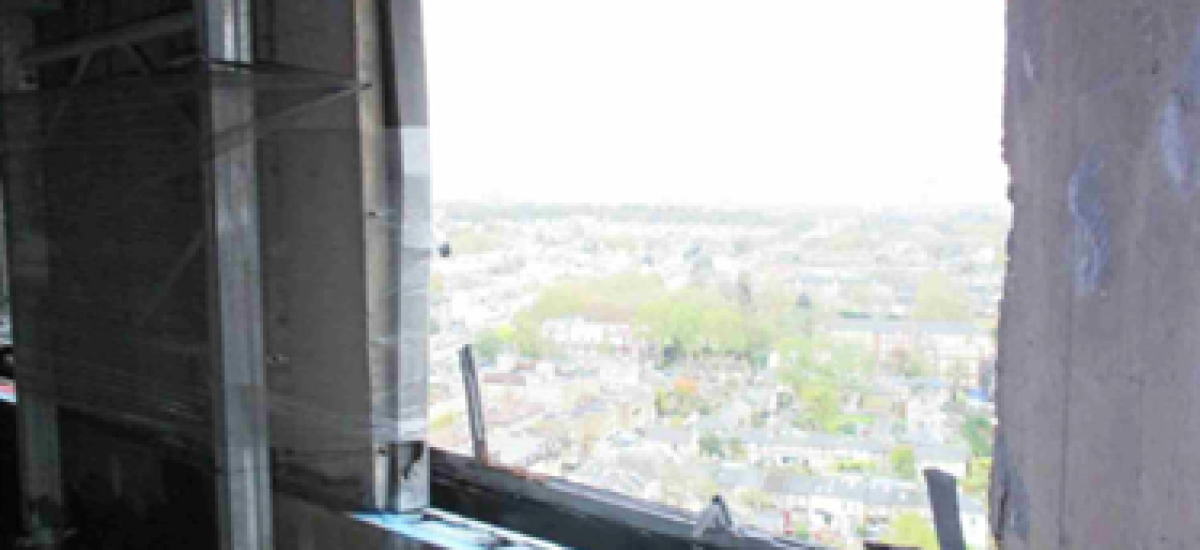15/7/2020
Efectis published a new article as a further step towards understanding the Grenfell fire disaster. The fire behaviour of windows installed in a building facade has an important influence on fire development during an enclosure fire. When subjected to the thermal actions of a fire, windows may have little fire resistance and thus can fail. When this happens, they transform into additional ventilation openings, altering the supply of fresh air to the enclosure.
Observations and numerical studies have allowed an understanding of the fire development inside apartments and over the facade during the Grenfell Tower fire. During these analyses, the need was highlighted for a deeper investigation into the failure of windows. To analyse window behaviour during a fire, an advanced Finite Element Method thermomechanical modelling is used. First, a heat transfer analysis is performed for windows subjected to the external flames from the identified scenario. The thermal loads evaluated from the fire are applied to the window structures to estimate their failure times. Two window casement configurations, closed and tilted-in, are investigated numerically. Then, a thermomechanical analysis of the window is addressed for each casement configuration. The modelled failure times are compared with those from observations. The good correlation that is observed, regardless of casement configuration, justifies the use of a simplified criterion for window failure in further steps of the study. In this case, a few minutes of fire exposure were sufficient for massive failure and communication between facade fire and apartments.
Article is available on Fire Technology website:
- Reconstruction of the Grenfell Tower Fire – Thermomechanical Analysis of Window Failure During the Grenfell Tower Disaster. Maxime Koohkan, Virginie Dréan, Bertrand Girardin, Eric Guillaume, Talal Fateh & Xavier Duponchel. Fire Technology, April 2020. DOI 10.1007/s10694-020-00980-4. https://link.springer.com/article/10.1007/s10694-020-00980-4
Previous already published steps of this analysis are available as follows:
- Study of fire behaviour of facade mock‐ups equipped with aluminium composite material‐based claddings, using intermediate‐scale test method. Eric Guillaume Talal Fateh Renaud Schillinger Roman Chiva Sebastian Ukleja. Fire and Materials, Volume 42, Issue 5. First published: 22 May 2018. https://onlinelibrary.wiley.com/doi/10.1002/fam.2635
- Numerical simulation of the fire behaviour of façade equipped with aluminium composite material‐based claddings—Model validation at intermediate scale. Virginie Dréan Bertrand Girardin Eric Guillaume Talal Fateh. Fire and Materials, Volume 43, Issue 7. First published: 29 July 2019. https://onlinelibrary.wiley.com/doi/10.1002/fam.2745
- Numerical simulation of the fire behaviour of facade equipped with aluminium composite material‐based claddings‐Model validation at large scale. Virginie Dréan Bertrand Girardin Eric Guillaume Talal Fateh. Fire and Materials, Volume 43, Issue 8. First published: 11 September 2019. https://onlinelibrary.wiley.com/doi/10.1002/fam.2759
- Reconstruction of Grenfell Tower fire. Part 1: Lessons from observations and determination of work hypotheses. Eric Guillaume Virginie Dréan Bertrand Girardin Faiz Benameur Talal Fateh. Fire and Materials, Volume 44, Issue 1. First published: 17 November 2019. https://onlinelibrary.wiley.com/doi/10.1002/fam.2766
- Reconstruction of Grenfell Tower fire. Part 2: A numerical investigation of the fire propagation and behaviour from the initial apartment to the façade. Eric Guillaume Virginie Dréan Bertrand Girardin Maxime Koohkan Talal Fateh. Fire and Materials, Volume 44, Issue 1. First published: 17 November 2019. https://onlinelibrary.wiley.com/doi/10.1002/fam.2765
- Reconstruction of Grenfell Tower fire. Part 3—Numerical simulation of the Grenfell Tower disaster: Contribution to the understanding of the fire propagation and behaviour during the vertical fire spread. Eric Guillaume Virginie Dréan Bertrand Girardin Faiz Benameur Maxime Koohkan Talal Fateh. Fire and Materials, Volume 44, Issue 1. First published: 17 November 2019. https://onlinelibrary.wiley.com/doi/10.1002/fam.2763
Contact: Eric Guillaume [eric.guillaume@efectis.com]

